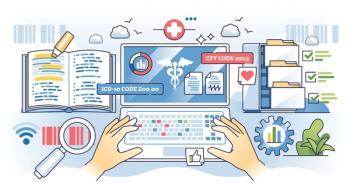
How smart practices are turning text messages into revenue
Text messaging enhances patient engagement, boosts medical practice revenues, and streamlines operations, making it essential for modern healthcare communication.
Every week, I speak with practice leaders who are looking for new ways to strengthen revenue in an increasingly challenging environment. Reimbursements keep tightening, costs keep rising and teams are stretched thin. Yet amid these pressures, I'm seeing many practices finding new success and turning a profit with something surprisingly simple and familiar: text messaging.
Texting is already part of
Why does texting work so well? It's direct and immediate. Texts are read almost instantly and responded to far more often than emails, phone calls or mailed letters. When messages are short, clear and actionable, patients respond. For practice staff, that means less time spent chasing patients and more time focusing on care, operations and growth.
Here are a few ways I'm seeing practices use texting to drive higher revenue and stronger profits.
Appointment recalls and closing care gaps
One of the easiest ways to boost revenue is by bringing existing patients back in for overdue preventive visits and procedures. A quick text reminder can make the difference between an unfilled slot and a completed, billable service.
Example: Hi Maria, it's time for your annual wellness visit. Tap here to schedule: [short link]
Trackable short links give practices valuable insight into patient engagement. By seeing how many patients click and schedule, staff can refine when and how messages are sent to get better results. Over time, this data helps practices understand what drives action and identify where opportunities for improvement exist.
Reducing no-shows and "no-gos"
Missed appointments are a double hit in the form of lost revenue and wasted time. Simple reminder and preparation texts help ensure patients arrive and do so ready for their visit.
Example: Hi James, your appointment with Dr. Patel is tomorrow at 8:30 a.m. Please arrive 15 minutes early and bring your medication list.
Some practices also use texting to confirm visits automatically. Patients can reply "Y" to confirm or "N" to reschedule, allowing staff to fill vacated slots quickly.
Filling schedule gaps
Last-minute cancellations are inevitable, but they don't have to mean lost revenue. A quick text blast to a waitlist can fill those empty slots within minutes.
Example: A 2 p.m. appointment just opened with Dr. Lee today. Text YES to claim it.
This kind of rapid outreach works because it meets patients where they already are — on their phones — and makes taking action effortless.
Enhancing telehealth programs
Texting is a simple way to strengthen telehealth revenue by improving patient participation and reducing missed virtual visits.
Example: Your telehealth visit with Dr. Nguyen starts in 10 minutes. Join here: [clinicname].link/telehealth.
Texts like this also support troubleshooting before the visit starts, helping ensure technology doesn't get in the way of care.
In addition, branded short links like the one in this example add another important layer: trust. Rather than sending patients long, unfamiliar URLs, practices can use custom, recognizable links. A clear, branded link signals professionalism and security, reassuring patients that it's safe to click. That sense of credibility often leads to higher response and conversion rates.
Supporting new reimbursable programs
When practices roll out new reimbursable programs, like remote patient monitoring and chronic care management, texting helps with patient education and enrollment.
Example: You're eligible for our new blood pressure monitoring program, covered by Medicare. Learn more: [short link].
Texts like these help boost awareness, participation and sustained engagement in programs that generate recurring revenue.
Many practices are also expanding their digital offerings, adding resources like educational articles, care guides, intake forms, videos and patient portals. But those tools only have value if patients actually use them. Trackable short links make it easy to connect patients directly to these tools and to see which links are being opened, how often and by whom. That visibility helps ensure that each digital investment delivers measurable returns rather than sitting idle online.
Collecting outstanding balances
Friendly, well-timed payment reminders help practices improve collections and margins while decreasing write-offs and bad debt.
Example: Hi Alex, your recent visit has a remaining balance of $42. Pay securely here: [practicename].link/payment. Thank you!
Since payment texts are short and unobtrusive, patients are more likely to respond. Adding a trackable short link allows practices to monitor and improve collection performance in real time, while a branded link helps reassure patients that the message and payment request are legitimate and secure.
Promoting cash-pay and elective services
Text messaging is an ideal tool for promoting services not covered by insurance.
Example: We're offering discounted cosmetic dermatology treatments this month. Tap to see options: [short link].
Multilingual texting capabilities can make this outreach even more effective, allowing practices to communicate with their full patient base in each patient's preferred language.
Improving online reviews and reputation management
More practices are using post-visit texts to encourage feedback and build their online reputation, which helps attract new patients and grow volume.
Example: Thanks for visiting us today! If you had a good experience, please share your feedback: [short link]. If there's anything we can improve, reply here so we can help.
Positive reviews build visibility and trust, while two-way texting makes it easy to resolve any patient concerns before they end up online.
Texting's other ROI: lower costs and higher efficiency
Text messaging's value extends well beyond generating revenue. It also helps reduce costs. Every message that replaces a phone call, mailed statement or manual follow-up saves staff time and operational dollars. For many practices, two-way texting has streamlined communication so effectively that smaller teams can manage growing patient volumes without adding administrative hours.
In an environment where margins keep tightening, the practices that thrive are those that communicate smarter. Texting doesn't require a major investment or system overhaul; it simply enhances what practices already do best: connecting with patients. By making communication more timely, personal and actionable, texting helps practices strengthen revenue, control costs and deliver care more efficiently.
The most successful practices aren't just sending reminders. They're using texting to engage, educate, and activate patients — and that's where the real revenue and profitability potential lies.
Brandon Daniell is co-founder of
Newsletter
Stay informed and empowered with Medical Economics enewsletter, delivering expert insights, financial strategies, practice management tips and technology trends — tailored for today’s physicians.















